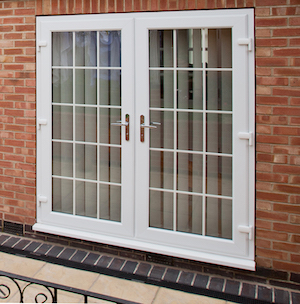
French Door Restoration
Add a review FollowOverview
-
Founded Date October 22, 1916
-
Sectors Support
-
Posted Jobs 0
-
Viewed 2
Company Description
One French Door Frame Success Story You’ll Never Remember
The Comprehensive Guide to French Door Frames
French doors have long been a favored architectural function in homes around the world, celebrated for their classy design and ability to link indoor and outdoor areas. The frame of a French residential Door Repairs is essential to its aesthetic appeal and functionality. This article looks into the different components, benefits, styles, and installation aspects of French door frames, supplying readers with a thorough understanding of this vital element in home design.

Comprehending French Door Frames
What Are French Doors?
French doors are normally defined by their large glass panels, which enable ample natural light and offer an unblocked view of the outdoors. Unlike conventional doors, French doors are usually set up in sets, swinging open to essentially double the entranceway. The frames of these doors are essential, as they should not just support the weight of the doors themselves but also enhance the overall appearance and functionality.
Components of French Door Frames
The main elements of a French door frame normally consist of:
- Main Frame: The tough structure that houses the glass panels and supplies assistance.
- Door Panels: The two separate doors that open outwards or inwards.
- Glass Inserts: The panes that can be either clear, frosted, or patterned glass.
- Sidelights: Vertical panels of glass that flank the door frame, boosting the overall look and light entry.
- Transom: An upper window mounted above the doors, often utilized to allow extra light into the location.
- Hardware: Includes hinges, handles, deadbolts, and locks to ensure security and performance.
Benefits of French Door Frames
French door frames provide a plethora of advantages, making them a preferable option for house owners:
- Aesthetic Appeal: Their classic design matches both standard and contemporary architecture.
- Natural Light: The extensive usage of glass enables optimum light penetration, brightening up any space.
- Ventilation: When opened, French doors provide exceptional air flow between rooms or from inside to outside.
- Area Efficiency: With doors that swing open rather than slide, they work well in smaller areas where standard doors may not fit.
- Increased Property Value: Well-installed French doors can improve the resale worth of a home due to their visual appeal and performance.
Types of French Door Frames
French door frames been available in various designs and materials. Here is a comparative look:
| Type | Description | Pros | Cons |
|---|---|---|---|
| Wood | Traditional visual, adjustable finishes | High insulation, adjustable | Needs maintenance, can warp |
| Vinyl | Resilient, low-maintenance synthetic material | Energy-efficient, affordable | Limited color alternatives |
| Fiberglass | Resilient product that imitates the look of wood | Low maintenance, energy-efficient | Can be more costly |
| Aluminum | Sleek modern frames that offer a minimalistic look | Lightweight, durable, and resistant to rust | Poor insulator compared to wood |
Installing French Door Frames
The installation of French door frames can be a straightforward process for knowledgeable DIYers, but numerous homeowners opt to work with specialists to make sure appropriate fitting and sturdiness. Nevertheless, understanding the basics can empower homeowners in making informed decisions.
Actions for Installation
- Measurement: Accurate measurement of the door opening is important to pick the correct frame size.
- Preparation: Remove any existing doors and frames carefully, making sure the opening is clean and level.
- Frame Assembly: If the frame remains in several pieces, assemble it according to the producer’s instructions.
- Placement: Position the frame within the opening, ensuring it is square and level.
- Securing: Use shims to adjust the frame and protect it in place with screws.
- Hanging Doors: Attach the door panels to the frame using correct hinges.
- Finishing Touches: Apply caulk and paint as needed to give the installation a polished appearance.
Often Asked Questions
1. Are French doors more energy-efficient than traditional doors?
Yes, French doors can be quite energy-efficient, especially if they are made from insulated products and have double-glazed glass. Try To Find Energy Star-rated alternatives for the very best performance.
2. Just how much do French doors cost?
The cost of French doors can vary substantially based upon material, size, and included functions such as grids or custom-made surfaces. Typically, the rate can range from ₤ 500 to ₤ 2,500, leaving out installation.
3. Can I use French doors in a little area?
Absolutely! French doors can in fact boost a smaller area by developing the illusion of more room and enabling natural light to flow, making the location feel brighter and more expansive.
4. How do I maintain my French door frames?
Routine maintenance includes inspecting for any signs of wear, guaranteeing the hinges are well-lubricated, cleaning up the glass to avoid accumulation, and repainting or refinishing wooden frames as required to prevent rot.
5. Can French doors be utilized as exterior doors?
Yes, French doors are typically utilized as exterior doors. Lots of homeowners use them as patio doors to link indoor living areas with outside areas.
French door frames are more than simply a trendy addition to a home; they are a practical aspect that improves light, space, and visual appeal. Homeowners should consider numerous products, designs, and installation processes when selecting the right French door frame for their space. By comprehending the benefits and qualities of these frames, they can make a more educated decision that lines up with their design goals and practical needs. Integrating French doors in a home not just elevates the visual however also considerably adds to producing a harmonious connection in between exterior and interior areas.

